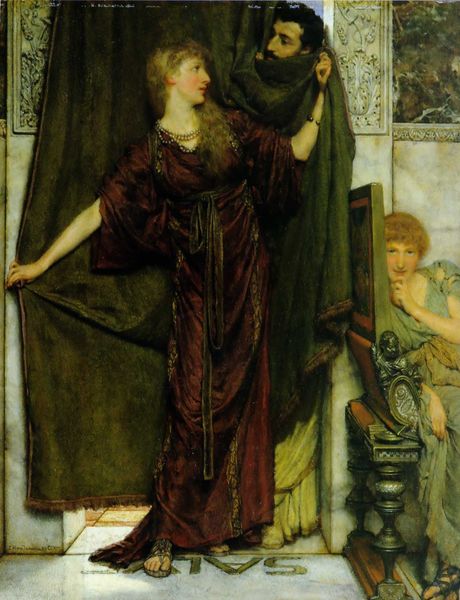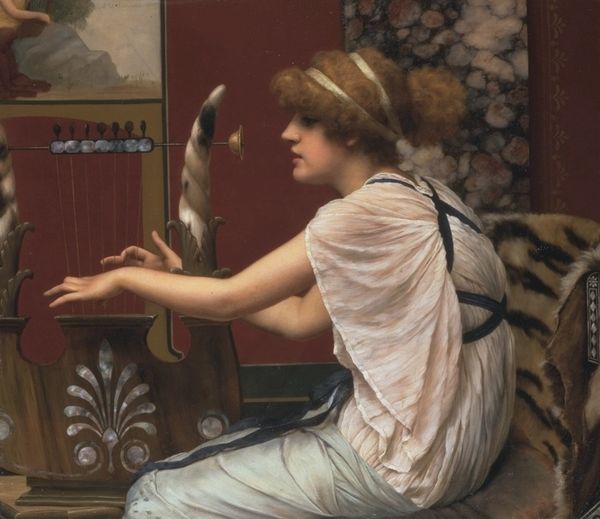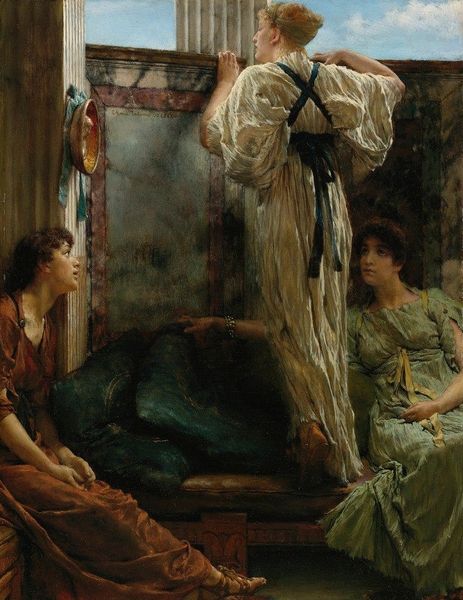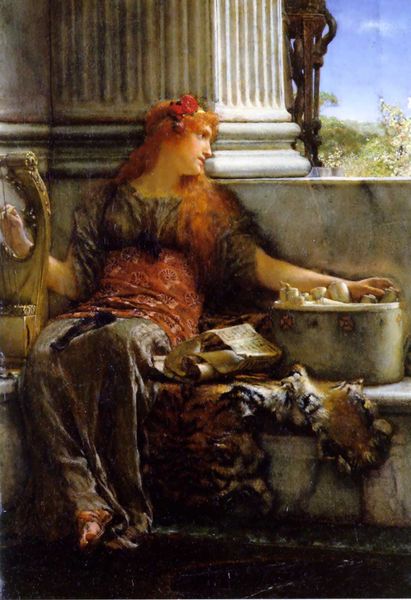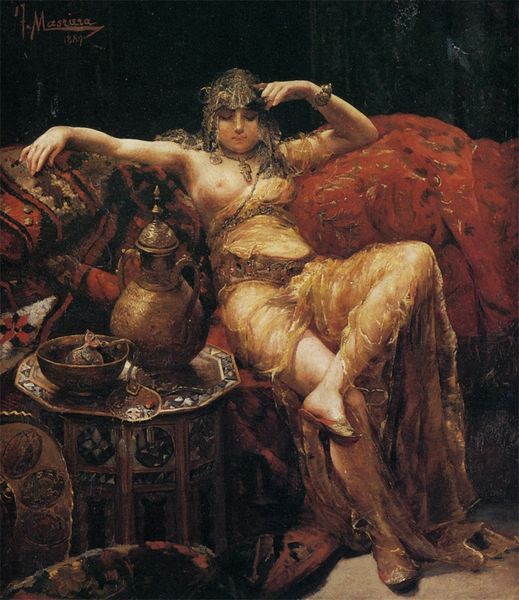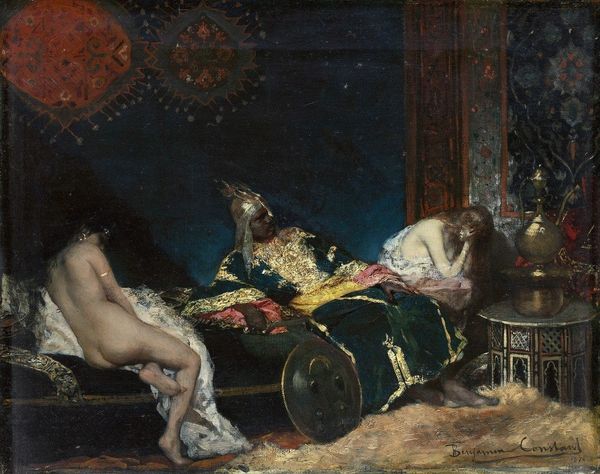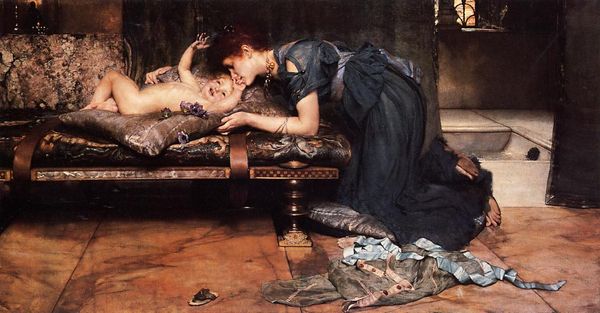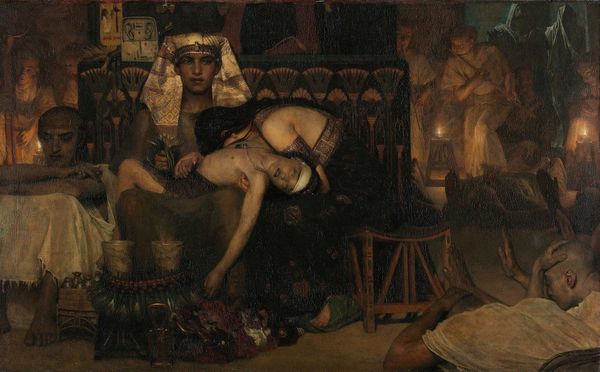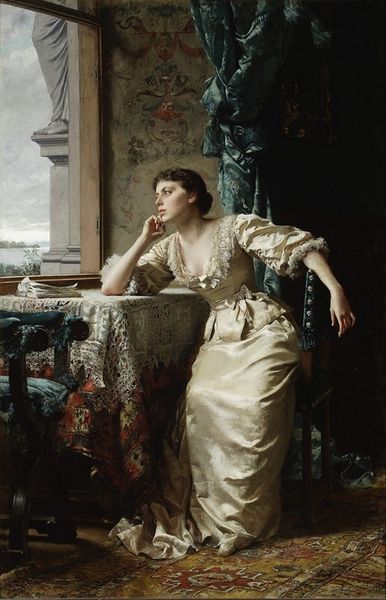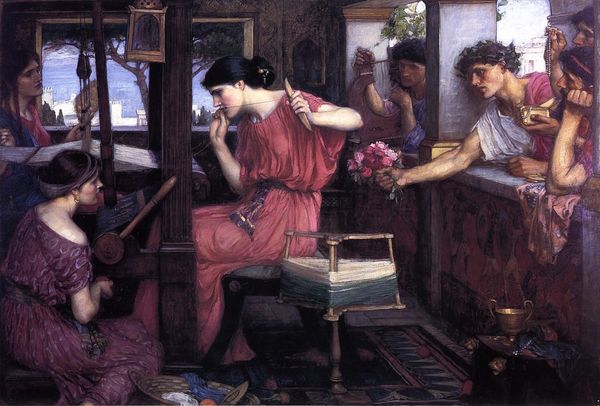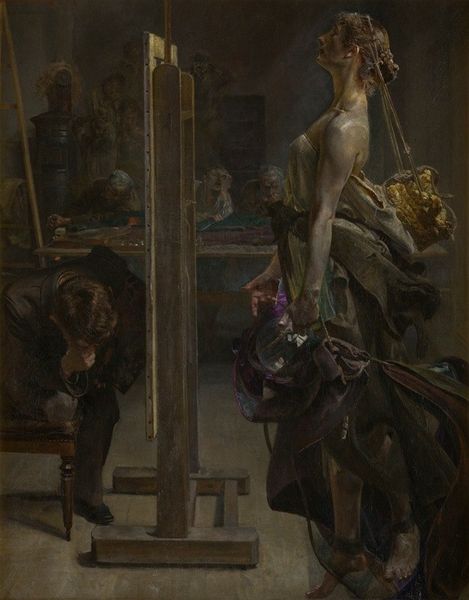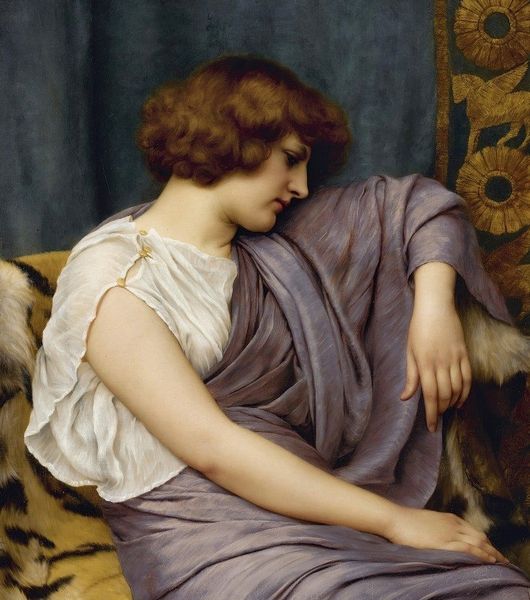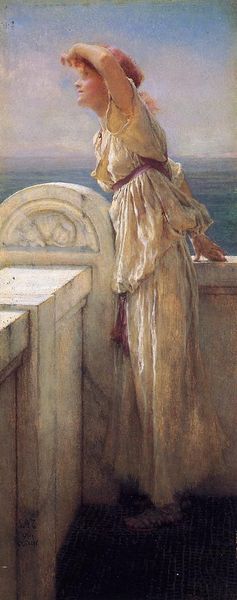
painting, oil-paint
#
portrait
#
gouache
#
narrative-art
#
painting
#
oil-paint
#
greek-and-roman-art
#
figuration
#
genre-painting
#
history-painting
#
academic-art
#
realism
Dimensions: 42.9 x 28 cm
Copyright: Public domain
Editor: Here we have Lawrence Alma-Tadema's "Pottery Painting," created in 1871 using oil paints. There's a strong sense of everyday life, an intimate glimpse into the world of these women, though I wonder, what does it all signify? What do you see in this piece? Curator: What strikes me is the artist's careful reconstruction of the past, a kind of "history painting" through a very particular lens. Look at the figures; their presentation, their clothes – they suggest a specific status, a class that has the leisure to engage in artistic pursuits. Who gets to create art, and who is depicted creating art, tells us a lot about the power dynamics in that reconstruction. Editor: I see what you mean. It feels staged, almost theatrical, not quite an honest portrayal of daily life. Curator: Exactly. Alma-Tadema was known for his meticulously researched historical details, but the interpretation, the perspective, that’s where the interesting questions arise. How does depicting women this way, engaged in art within the domestic sphere, reflect Victorian ideals or anxieties about women's roles in society? Were women included or excluded at the time, and who would buy paintings of that subject matter? Editor: So it’s not just about what's being painted, but also about who’s doing the painting – both in the artwork and in reality. I never thought about that. Curator: Precisely! By examining the choices the artist made and considering the social context in which the painting was produced and consumed, we can unpack some complex questions about gender, class, and the very construction of history. What appears like an innocent genre scene is rife with social commentary. Editor: That gives me a completely different perspective on this work. Now, I'm seeing how much these so-called historical paintings are a window into Victorian values and beliefs. Thanks! Curator: It's a process of continuously questioning and re-evaluating what we see, and that's what makes art history such a dynamic and important discipline.
Comments
No comments
Be the first to comment and join the conversation on the ultimate creative platform.
